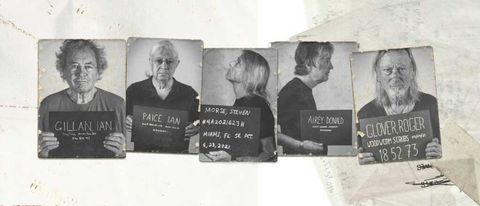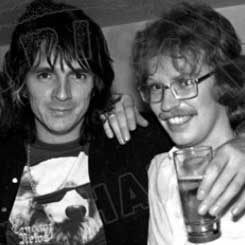Deep Purple are developing a wicked sense of humour in the twilight of their career. They’ve called their new album of cover versions Turning To Crime as a jibe against us cynical rock-critic types, who generally disapprove of such nefarious releases. But the usual criticisms of covers sets – tired, lazy, uninspiring, contract-fulfilling – don’t apply here.
This record, which really should be titled Turning Back Time, is an absolute blast. For the first time, the band have collaborated remotely, out of necessity due to covid (a rendition of Huey ‘Piano’ Smith’s Rockin’ Pneumonia And The Boogie Woogie Flu must’ve been high on their tongue-in-cheek agenda). And it’s a triple-jabbed delight, with the band channelling their inner Showaddywaddy.
Frontman Ian Gillan’s love of the early days of rock’n’roll has been well documented, as has his re-formation of his 60s band The Javelins, plainly influencing song choices such Let The Good Times Roll (by Ray Charles and Quincy Jones, given the full-on big-band treatment here) and Lonnie Donegan’s skifflemungous The Battle Of New Orleans.
But it’s not all crepe shoes and drape jackets, and there are a couple of missteps. Opening track 7 And 7 Is, by Arthur Lee’s Love, is perhaps too Purple-sized and lacks the sardonic charm of the original. And on Fleetwood Mac’s Oh Well it’s surprising to hear drummer Ian Paice eschew the signature ‘tippety-tap bit’ (a technical term) just before Gillan intones the words ‘Can’t help about the shape I’m in…’; the original’s mournful ending is accurately recreated, though.
But the highlights massively outweigh the lowlights. A rollicking Dixie Chicken simulates Little Feat’s trademark breezy lope; Bob Seger’s Lucifer is worth the price of admission alone to hear Gillan exclaim the immortal words ‘holy mackerel’ and, indeed, ‘moley’; Cream’s White Room is suitably sinister; Bob Dylan’s Watching The River Flow transports the listener to a saloon bar in the Wild West, Airey at a battered piano, smoking a big cheroot.
The best is saved until last. Caught In The Act is thankfully not a recreation of Styx’s entire 1984 live double album, rather it’s a medley of tunes from Freddie King, Booker T. & the M.G.’s, the Allman Brothers and the Spencer Davis Group, and it rattles along like Casey Jones’s Cannonball Express on steroids. Oh, and sandwiched in there is also a smidgen of Dazed And Confused. Deep Purple play Led Zeppelin? Who would’ve thunk it?! The world of rock reels.


